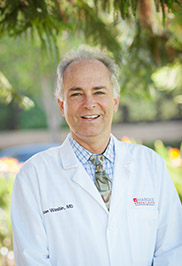
In addition to the factors mentioned above, a variety of risks make you more likely to develop this very common disease:
- Age (risk goes up as you get older)
- Male Gender
- Smoking
- Family History (especially if a first degree relative has CAD at age < 55)
- Obesity or Sedentary Lifestyle
- Stress (including high blood pressure and high cholesterol)
The symptoms of CAD emerge only after significant blockages develop in the coronary arteries. These include fatigue, shortness of breath, and chest pain (angina). Sometimes pain is felt in the jaw, neck, back, or left arm. If the artery becomes fully blocked, the affected portion of the heart muscle dies (heart attack).
Prevention plays a huge role in limiting the impact of CAD. Focus on the reversible risk factors: increase physical activity, lose weight, stop smoking, optimize diet, and enact steps to decrease your stress level. Talk with your doctor to see if medication should be taken to lower your cholesterol and blood pressure. Enjoy that grilled salmon, knowing that it is as healthful for your heart as it is pleasing to your palate.
Fortunately, a variety of methods are available to diagnose and treat CAD. Your cardiologist may ask you to perform a treadmill stress test. Alternatively, a CAT scan may offer a superior way to diagnose CAD. Once identified, blockages in coronary arteries can either be bypassed surgically, or they can be treated nonsurgically. In the latter case a narrow tube can be inserted directly through the blockage, opening up the artery. A tiny balloon can be inflated against the blockage, creating a larger lumen through which blood can pass. Or, a tiny straw (stent) can be passed through the blockage to preserve patency.
CAD can be a relentless process, recurring even after successful treatment. When viewed in its entirety, few diseases serve as better reminders to the truth of the adage: AN OUNCE OF PREVENTION IS WORTH A POUND OF CURE.
The information provided is for general interest only and should not be misconstrued as a diagnosis, prognosis or treatment recommendation. This information does not in any way constitute the practice of medicine, or any other health care profession. Readers are directed to consult their health care provider regarding their specific health situation. Marque Medical is not liable for any action taken by a reader based upon this information.
